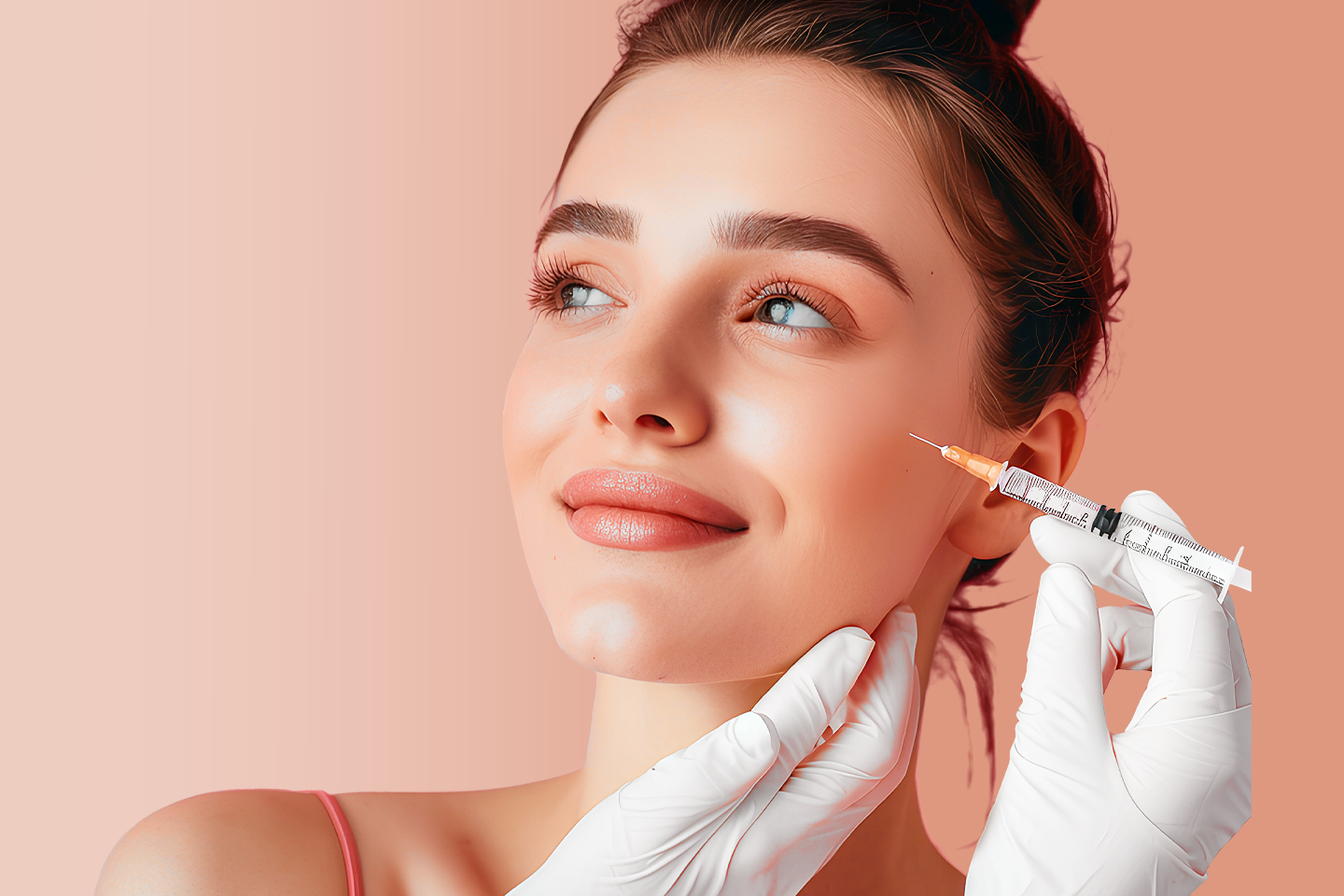Introduction
Dermal fillers, also known as soft tissue fillers, are injectable substances designed to add volume and smooth out wrinkles and fine lines. In India, dermal fillers have gained significant popularity as a non-surgical option for rejuvenating the face and restoring a youthful glow. They are ideal for addressing concerns like volume loss, wrinkles, facial contouring, and enhancing features such as lips, cheeks, and jawlines. When performed by qualified professionals using FDA-approved fillers, this treatment offers a safe, effective, and minimally invasive solution for improving appearance without the risks associated with surgery.
Understanding Dermal Fillers
What are Dermal Fillers?
Dermal fillers are injectable gels used to restore lost facial volume, smooth out wrinkles, and enhance facial features. The most common type is hyaluronic acid, which is naturally found in the skin and helps retain moisture and plumpness.
Are Fillers Permanent?
No, dermal fillers are not permanent. Over time, the body absorbs the filler, and the results gradually fade. Depending on the type of filler used, effects can last from 6 months to 2 years.
Are Fillers Worth the Money?
While the cost may seem high, fillers offer long-lasting, non-invasive results. For many, the results are well worth the investment due to the immediate improvements in facial aesthetics and minimal downtime compared to surgery.
Choosing the Right Treatment
Botox vs. Fillers: What’s the Difference?
Botox is a muscle relaxant that temporarily smooths out dynamic wrinkles caused by muscle movement (like frown lines). In contrast, fillers add volume and are used to treat static wrinkles, hollow areas, and lost facial volume. Botox is ideal for fine lines, while fillers are used for volume restoration.
Safety and Side Effects
Are Fillers Safe?
When performed by qualified professionals using FDA-approved materials, dermal fillers are generally safe. Side effects are rare and typically mild, such as swelling or bruising at the injection site, which subsides after a few days.
Side Effects of Fillers and Botox
Common side effects of dermal fillers include swelling, bruising, or redness at the injection site. These are temporary and typically resolve within a few days. More severe risks, such as infections or allergic reactions, are rare but possible.
Can Fillers Be Removed?
Hyaluronic acid-based fillers can be dissolved with an enzyme called hyaluronidase, which breaks down the filler and reverses the results. This process is painless and ensures that patients can modify or remove their fillers if necessary.
Addressing Common Concerns
Do Fillers Work After 40?
Dermal fillers work effectively for individuals over 40 as they help restore volume that is naturally lost with aging. Fillers can target areas such as cheeks, jawlines, and under-eye areas, rejuvenating the appearance.
Do Fillers Look Fake?
When administered properly by an experienced injector, fillers provide natural-looking results. The key is using the right amount of filler for the area, ensuring subtle yet effective enhancements that enhance the face’s natural beauty.
Where to Avoid Fillers?
While fillers are effective in many areas of the face, they are not recommended for highly mobile or sensitive areas, such as near the eyes or lips, without professional consultation.
Who Should NOT Use Fillers?
Certain individuals should avoid dermal fillers, including those who are pregnant or breastfeeding, as there is insufficient research on the effects of fillers in these cases. People with certain medical conditions, such as autoimmune diseases, active skin infections, or allergies to the ingredients in the fillers, should also refrain from using them. It’s essential to consult a qualified practitioner to ensure fillers are safe based on your health history.
Do Lip Fillers Hurt?
While lip fillers are not typically painful, you may experience some discomfort during the injection process. To minimize pain, a topical numbing cream is applied to the treatment area beforehand. Most patients report feeling a slight pinching or pressure sensation, which subsides quickly. In some cases, a local anesthetic may be used for more significant treatments to ensure comfort.
What is the Most Painful Area for Fillers?
The lips and the under-eye area are often considered the most sensitive areas for fillers due to the thinner skin and higher concentration of nerve endings. While discomfort is temporary, these areas may require additional numbing agents to make the procedure more comfortable.
Is it OK to Sleep After Fillers?
After receiving fillers, it’s important to avoid sleeping on your face for the first 24 hours to prevent putting pressure on the treated areas. Sleeping on your back with your head elevated is recommended to minimize swelling and allow the fillers to settle naturally.
Can You Kiss After Lip Fillers?
It’s best to avoid kissing or any other activity that puts pressure on your lips for at least 24 hours after lip filler injections. This allows the filler to settle in properly and reduces the risk of complications such as bruising or uneven results. Always follow aftercare instructions provided by your practitioner for optimal results.
Pain and Aftercare
Fillers are generally not very painful, and topical numbing creams are used to minimize discomfort. Aftercare includes avoiding strenuous exercise for a few days, not applying pressure to the treated areas, and avoiding sun exposure.
Fillers vs. Surgery
Is Fillers Better Than Surgery?
Fillers are ideal for those seeking non-invasive solutions with no recovery time. They provide immediate results, while surgery offers permanent changes but requires longer recovery times and higher costs. Fillers are perfect for those who want to enhance their features without undergoing surgery.
Where Can Dermal Fillers Be Used?
Dermal fillers are a popular non-surgical option to rejuvenate and enhance facial features. They can restore volume, smooth lines, and define facial contours, giving you a more youthful appearance.
Cheeks & Nasolabial Folds: Fillers are used to add volume to the cheeks, lifting the face and enhancing its natural contours. They also smooth out laugh lines (nasolabial folds) around the nose and mouth, offering a refreshed look.
Marionette Lines & Under-Eyes: Fillers can soften the deep lines around the mouth (marionette lines) and reduce hollowness and dark circles under the eyes, brightening the face and creating a more rested, youthful appearance.
Jawline & Chin: Filler injections can define the jawline and chin, creating a more balanced and symmetrical facial profile.
Forehead Lines & Lips: Smooth out horizontal forehead lines and enhance lip volume and shape, giving you a plumper, youthful smile while reducing fine lines around the lips.
Body Areas for Filler Treatments
Fillers are not limited to the face; they can also be used on specific body areas to enhance contours and restore volume.
Bust Line & Buttocks: Fillers offer a non-surgical alternative for breast enhancement, helping to lift and shape the bust line. Additionally, non-invasive buttock fillers can enhance volume and shape, creating a fuller, more sculpted appearance without surgery.
Conclusion
Dermal fillers are a fantastic, non-surgical solution for individuals looking to restore youthful volume, smooth out wrinkles, or enhance facial features. With minimal discomfort, no downtime, and long-lasting results, fillers provide an effective alternative to more invasive treatments. Always choose a reputable professional to ensure the best results and safety. Book your consultation today and experience the transformation that dermal fillers can bring!


